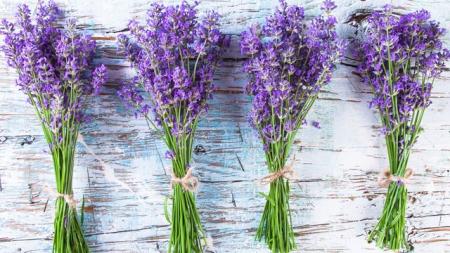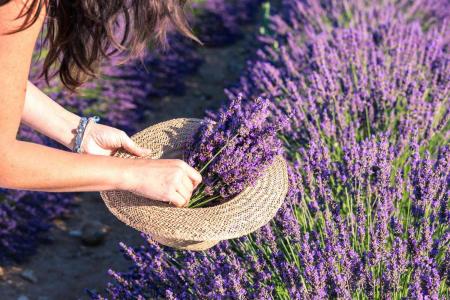Lavender is more than just a scent, Lavender Quiz
Lavender, with its fragrant and delicate purple flowers, is a plant that has captivated human interest for centuries. Its rich history, diverse uses, and unique characteristics make it a beloved and versatile botanical species. Native to Europe, East Africa, Southwest Asia, and India, lavender has a lengthy history dating back at least 2500 years.
Lavender, scientifically known as Lavandula, is a member of the mint family (Lamiaceae) and is prized for its aromatic and culinary properties. The plant's essential oil is a key component in the production of perfumes, soaps, and cosmetics, and it is also used for its therapeutic benefits, such as its calming and soothing effects.
In addition to its aromatic and ornamental uses, lavender has a long history of culinary application, with English lavender (Lavandula angustifolia) being the most commonly used species in cooking.
The physical description of lavender is as captivating as its uses. Lavenders are small evergreen shrubs with gray-green hoary linear leaves and sparsely arranged purple flowers on spikes at the tips of long bare stalks.
The plant's distinctive fragrance is due to the shining oil glands embedded among tiny star-shaped trichomes on its leaves and stems.
The plant's essential oil, obtained by distillation of the flowers, is a colorless or yellow liquid used primarily in perfumery and cosmetics.
The ancient Greeks and Romans used lavender in their herbal baths, and during the Middle Ages, it was considered an herb of love and used as an aphrodisiac. Lavender was also used in ancient Egypt for embalming and cosmetics, and jars filled with unguents containing something resembling lavender were found in the tomb of Tutankhamen.
Lavender was little used in the Dark Ages except by monks and nuns, who preserved the knowledge of herbal lore in their physics gardens. They copied ancient manuscripts and recorded the medicinal effects of various plants. Under an edict of the Holy Roman Empire in 812 AD, they were charged with growing vegetables, medicinal plants, flowers, and trees. Lavender was one of the herbs listed as a medicinal plant.
Lavender experienced a renaissance in Tudor England. When Henry VIII dissolved the monasteries, lavender moved to domestic gardens. The ladies of the manor used lavender for all kinds of things. It was placed among linens, sewn into sweet bags, used to freshen the air, and mixed with beeswax to make furniture polish. Traditionally it was planted near the laundry room, and linens and clothing were laid over the plants. It was also useful in repelling insects. Queen Elisabeth, who loved lavender, used it in tea to treat her frequent migraines and as a perfume.
Lavender is known for its soothing, relaxing qualities and has been used to treat hyperactivity, insomnia, headaches, toothaches, sore joints, and rumbling digestive systems. It was also used to ward off diseases such as the plague and cholera, and in 17th century London, people tied small bunches of lavender to their wrists to protect themselves from the bubonic plague.
Today, lavender is grown extensively around the world, and its essential oil is a key component in the production of perfumes, soaps, and cosmetics. It is also used for its therapeutic benefits, such as its calming and soothing effects. In addition to its aromatic and ornamental uses, lavender has a long history of culinary application, with English lavender (Lavandula angustifolia) being the most commonly used species in cooking.
In conclusion, lavender is a plant with a rich and diverse history that has been used for a variety of purposes throughout the ages. Its soothing and relaxing qualities, as well as its aromatic and culinary properties, have made it a beloved botanical species with a lasting impact on human culture and well-being. Whether adorning a garden, flavoring a dish, or scenting a room, lavender continues to enchant and inspire with its timeless allure.
This test is only for lavender lovers, where secrets you will know for the first time about lavender!
Example of the test

What is the best way to store dried lavender?

What is the ideal location for growing lavender?
What is the most common type of lavender?
What is the most common color of lavender flowers?

What is the best way to dry lavender?




